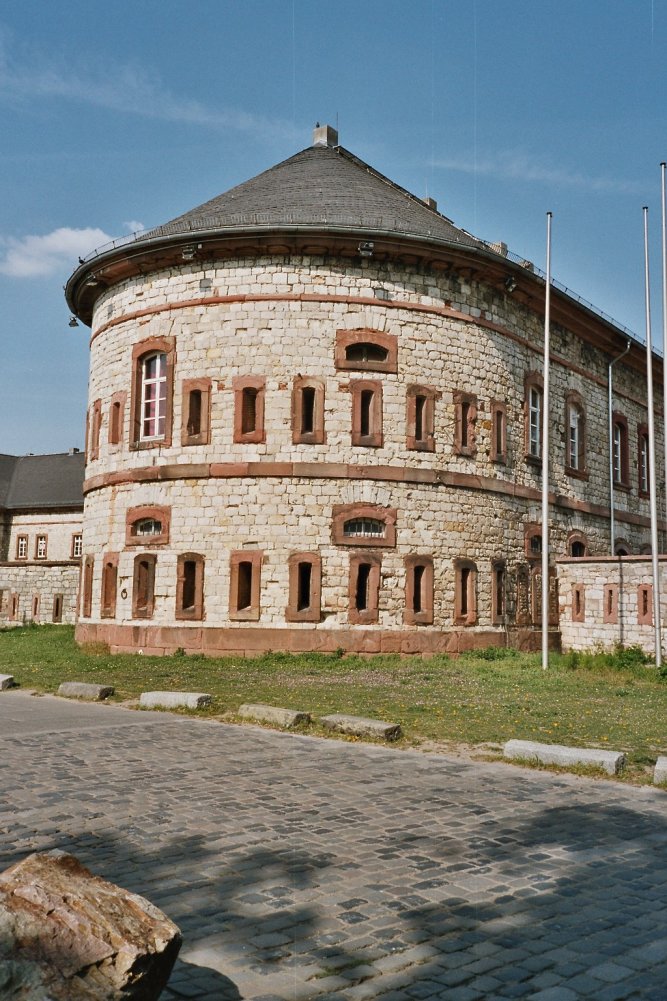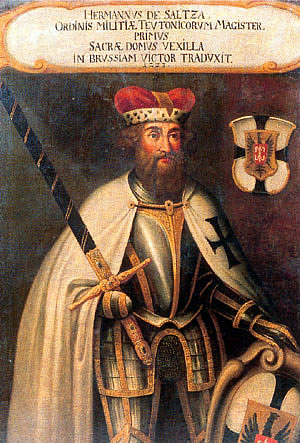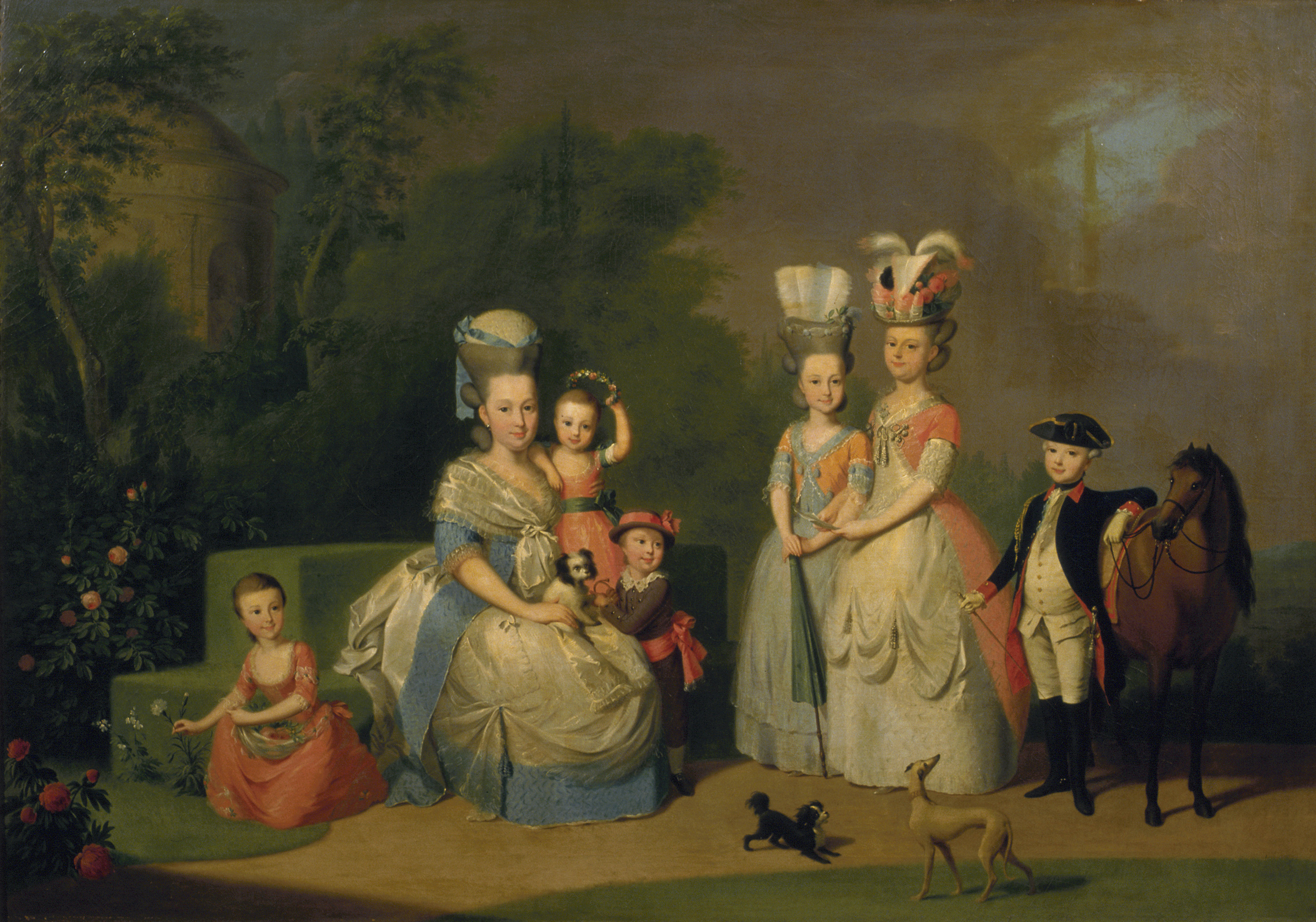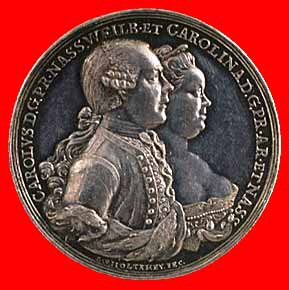|
Archduke Wilhelm Franz Of Austria
Archduke Wilhelm Franz Karl of Austria-Teschen (German: Erzherzog Wilhelm Franz Karl von Habsburg-Lothringen, 21 April 1827 – 29 April 1894) was an Archduke of Austria from the House of Habsburg. He was born in Vienna as the son of Archduke Charles, Duke of Teschen (1771–1847) and Princess Henrietta of Nassau-Weilburg (1797–1829). He was a grandson of Leopold II (1747–1792) and nephew of Franz II (1768–1835), the last two Holy Roman Emperors. He studied political sciences at the University of Vienna The University of Vienna (, ) is a public university, public research university in Vienna, Austria. Founded by Rudolf IV, Duke of Austria, Duke Rudolph IV in 1365, it is the oldest university in the German-speaking world and among the largest ... and he was a student of Joseph von Kudler. He held the office of Grand Master of the Teutonic Knights from 1863 until his death in 1894. He gained the rank of '' Feldzeugmeister'' in the service of the Austrian A ... [...More Info...] [...Related Items...] OR: [Wikipedia] [Google] [Baidu] |
Vienna
Vienna ( ; ; ) is the capital city, capital, List of largest cities in Austria, most populous city, and one of Federal states of Austria, nine federal states of Austria. It is Austria's primate city, with just over two million inhabitants. Its larger metropolitan area has a population of nearly 2.9 million, representing nearly one-third of the country's population. Vienna is the Culture of Austria, cultural, Economy of Austria, economic, and Politics of Austria, political center of the country, the List of cities in the European Union by population within city limits, fifth-largest city by population in the European Union, and the most-populous of the List of cities and towns on the river Danube, cities on the river Danube. The city lies on the eastern edge of the Vienna Woods (''Wienerwald''), the northeasternmost foothills of the Alps, that separate Vienna from the more western parts of Austria, at the transition to the Pannonian Basin. It sits on the Danube, and is ... [...More Info...] [...Related Items...] OR: [Wikipedia] [Google] [Baidu] |
Fortress Of Mainz
The Fortress of Mainz was a fortressed garrison town between 1620 and 1918. At the end of the Napoleonic Wars, under the term of the 1815 Peace of Paris, the control of Mainz passed to the German Confederation and became part of a chain of strategic fortresses which protected the Confederation. With the dissolution of the Confederation and the Austro-Prussian War, control of the fortress first passed to Prussia, and, after the 1871 Unification of Germany, to the German Empire. 1839 In 1839 an article on Mainz in '' The Penny Cyclopædia'' stated that Mainz was one of the strongest fortresses in Europe, and a chief bulwark of Germany against France. At the Congress of Vienna, Mainz was assigned to the Louis, Grand-Duke of Hesse-Darmstadt, but it was decided that, as a fortress, it should belong to the German Confederation, with a garrison of Austrian, Prussian, and Hessian troops. This garrison in time of peace consisted of 6,000 men. The military governor, who retained his pos ... [...More Info...] [...Related Items...] OR: [Wikipedia] [Google] [Baidu] |
Archduke Eugen Of Austria
Archduke Eugen Ferdinand Pius Bernhard Felix Maria of Austria-Teschen (21 May 1863 – 30 December 1954) was an Archduke of Austria-Hungary, Austria and a Prince of Kingdom of Hungary, Hungary and Kingdom of Bohemia, Bohemia. He was the last Grand Master of the Teutonic Order from the House of Habsburg, Habsburg dynasty. Early life Eugen was the son of Archduke Karl Ferdinand of Austria (son of Archduke Charles, Duke of Teschen) and of his wife Archduchess Elisabeth Franziska of Austria. He was born at the castle of Gross Seelowitz in Moravia (today Židlochovice near Brno in the Czech Republic). At his baptism he was given the names ''Eugen Ferdinand Pius Bernhard Felix Maria''. His education was Spartan in character. His country living at Gross Seelowitz and holidays at Gmünd, Carinthia, Gmund alternated with a sound education and strict instruction. At the Palais Erzherzog Albrecht (Archduke Albrecht's Palace, also known as the Albrechtspalais) in Vienna, Eugen received inst ... [...More Info...] [...Related Items...] OR: [Wikipedia] [Google] [Baidu] |
Archduke Maximilian Of Austria-Este
Archduke Maximilian Joseph of Austria-Este (July 14, 1782 – June 1, 1863), the fourth son of Archduke Ferdinand of Austria-Este and younger brother of Francis IV, Duke of Modena. He was Hochmeister, grand master of the Teutonic Knights from 1835 to 1863. Biography Born in Milan, Maximilian was the son of Archduke Ferdinand of Austria (1754–1806), Archduke Ferdinand of Austria (son of Maria Theresa of Habsburg monarchy, Austria and governor of the Duchy of Milan) and Maria Beatrice Ricciarda d'Este. He spent his youth in Monza, where his family had fled after the Italian campaigns of the French Revolutionary Wars, French invasion of the Duchy of Modena. After staying in Verona, Padua, Trieste and Ljubljana, Laibach, his family moved to Wiener Neustadt. In 1801 he joined the Teutonic Order, obtaining the Austrian Cross in 1804. After studying in the Theresian Military Academy of Wiener Neustadt, he was named Major General in the Austrian Army during the French Revolutionary a ... [...More Info...] [...Related Items...] OR: [Wikipedia] [Google] [Baidu] |
Grand Master Of The Teutonic Order
The grand master of the Teutonic Order (; ) is the supreme head of the Teutonic Order. It is equivalent to the Grand master (order), grand master of other Military order (religious society), military orders and the superior general in non-military Religious order (Catholic), Roman Catholic religious orders. ''Hochmeister'', literally "high master", is only used in reference to the Teutonic Order, as ''Großmeister'' ("grand master") is used in German to refer to the leaders of other orders of knighthood. An early version of the full title in Latin was ''Magister Hospitalis Sanctae Mariae Alemanni, Alemannorum Hierosolymitani''. Since 1216, the full title ''Magister Hospitalis Domus Sanctae Mariae Teutons, Teutonicorum Hierosolymitani'' ("Master of the Hospital House of the Blessed Virgin Mary of the Germans of Jerusalem") was used. The offices of ''Hochmeister'' and ''Deutschmeister'' (''Magister Germaniae'') were united in 1525. The title of ''Magister Germaniae'' had been int ... [...More Info...] [...Related Items...] OR: [Wikipedia] [Google] [Baidu] |
Princess Carolina Of Orange-Nassau
Princess Carolina of Orange-Nassau (''Wilhelmine Carolina''; 16 February 1743 – 6 May 1787) was a Dutch regent. She was the daughter of William IV, Prince of Orange, Stadtholder of the Netherlands, and Anne, Princess Royal. She was regent of the Netherlands from 1765 until 1766 during the minority of her brother, William V. Life Princess Carolina was born in Leeuwarden, the eldest daughter of William IV, Prince of Orange, Stadtholder of the Netherlands, and Anne, Princess Royal. In 1747, it was declared that the position of stadtholder could be inherited by females, thus making the young Princess Carolina the heir presumptive to the position of stadtholder. However, in 1748, a male heir, William, was born to her parents, thus displacing her and putting her second in line to the position. She was given a good education in music. Princess Carolina's father died in 1751, making her three-year-old brother William V of Orange. At that point, her mother was appointed regent. Her marri ... [...More Info...] [...Related Items...] OR: [Wikipedia] [Google] [Baidu] |
Charles Christian, Prince Of Nassau-Weilburg
Charles Christian, Prince of Nassau-Weilburg (''Karl Christian'', 16 January 1735 in Weilburg – 28 November 1788 in Münster-Dreissen, near Kirchheim an der Weinstraße, Kirchheim), till 1753 Count of Nassau-Weilburg, was the first ruler of the Principality of Nassau-Weilburg between 1753 and 1788. Family and rule He was the son of Charles August, Prince of Nassau-Weilburg and Princess Auguste Friederike of Nassau-Idstein. He succeeded his father in 1753 and united his territories in 1783 with Nassau-Saarbrücken, Nassau-Usingen and Nassau-Dietz. Marriage He married on 5 March 1760 in The Hague Princess Carolina of Orange-Nassau (1743–1787), daughter of William IV, Prince of Orange and Anne, Princess Royal and Princess of Orange, Anne, Princess Royal. He became a general in the Dutch infantry, governor of Bergen op Zoom and governor of Maastricht (1773–1784). He negotiated in vain with the Patriots (Dutch Republic), Patriots in 1787. He died in 1788 and was succeeded by h ... [...More Info...] [...Related Items...] OR: [Wikipedia] [Google] [Baidu] |
Maria Amalia Of Saxony
Maria Amalia (Maria Amalia Christina Franziska Xaveria Flora Walburga; 24 November 1724 – 27 September 1760) was Queen of Spain from 10 August 1759 until her death in 1760 as the wife of King Charles III. Previously, she had been Queen of Naples and Sicily since marrying Charles on 19 June 1738. She was born a princess of Poland and Saxony, daughter of King Augustus III of Poland and Princess Maria Josepha of Austria. Maria Amalia and Charles had thirteen children, of whom seven survived into adulthood. A popular consort, Maria Amalia oversaw the construction of the Caserta Palace outside Naples as well as various other projects, and she is known for her influence upon the affairs of state. Biography Early years She was born at Dresden Castle in Dresden, the daughter of Augustus III of Poland, Elector of Saxony and Maria Josepha of Austria, herself daughter of Joseph I, Holy Roman Emperor. Her mother was the first cousin of Empress Maria Theresa. The infant was baptized ... [...More Info...] [...Related Items...] OR: [Wikipedia] [Google] [Baidu] |
Charles III Of Spain
Charles III (; 20 January 1716 – 14 December 1788) was King of Spain in the years 1759 to 1788. He was also Duke of Parma and Piacenza, as Charles I (1731–1735); King of Naples, as Charles VII; and King of Sicily, as Charles III (or V) (1735–1759). He was the fourth son of Philip V of Spain and the eldest son of Philip's second wife, Elisabeth Farnese. He was a proponent of enlightened absolutism and regalism. In 1731, the 15-year-old Charles became Duke of Parma and Piacenza following the death of his childless grand-uncle Antonio Farnese, Duke of Parma, Antonio Farnese. In 1734, at the age of 18, he led Spanish troops in a bold and almost entirely bloodless march down Italy to seize the Kingdom of Naples and Kingdom of Sicily and enforce the Spanish claim to their thrones. In 1738, he married the Princess Maria Amalia of Saxony, daughter of Augustus III of Poland, who was an educated, cultured woman. The couple had 13 children, eight of whom reached adulthood. They resided ... [...More Info...] [...Related Items...] OR: [Wikipedia] [Google] [Baidu] |
Maria Theresa
Maria Theresa (Maria Theresia Walburga Amalia Christina; 13 May 1717 – 29 November 1780) was the ruler of the Habsburg monarchy from 1740 until her death in 1780, and the only woman to hold the position suo jure, in her own right. She was the sovereign of Archduchy of Austria, Austria, Kingdom of Hungary, Hungary, Kingdom of Croatia (Habsburg), Croatia, Crown of Bohemia, Bohemia, Principality of Transylvania (1711–1867), Transylvania, Slavonia, Duchy of Mantua, Mantua, Duchy of Milan, Milan, Moravia, Galicia and Lodomeria, Dalmatia, Austrian Netherlands, Carinthia, Carniola, Gorizia and Gradisca, Austrian Silesia, Tyrol (state), Tyrol, Styria and Duchy of Parma, Parma. By marriage, she was List of Lorrainian royal consorts#House of Vaudemont, 1473–1737, Duchess of Lorraine, List of Tuscan consorts#House of Lorraine, 1737–1765, Grand Duchess of Tuscany, and List of Holy Roman empresses#House of Lorraine, Holy Roman Empress. Through her aunt, Charlotte Christine of Brunswi ... [...More Info...] [...Related Items...] OR: [Wikipedia] [Google] [Baidu] |
Francis I, Holy Roman Emperor
Francis I (Francis Stephen; ; ; ; 8 December 1708 – 18 August 1765) was Holy Roman Emperor from 1745 to 1765, List of rulers of Austria#Dukes and archdukes of Austria under the House of Habsburg, Archduke of Austria from 1740 to 1765, List of kings and dukes of Lorraine#House of Lorraine, Duke of Lorraine and Duchy of Bar, Bar from 1729 to 1737, and List of grand dukes of Tuscany#Habsburg-Lorraine grand dukes of Tuscany, 1737–1801, Grand Duke of Tuscany from 1737 to 1765. He became the ruler of the Holy Roman Empire, Habsburg monarchy, Austria, and Grand Duchy of Tuscany, Tuscany through his marriage to his second cousin Maria Theresa of Austria, daughter of Emperor Charles VI. Francis was the last non-Habsburg monarch of the Empire. The couple were the founders of the Habsburg-Lorraine dynasty, and their marriage produced sixteen children. Francis was the oldest surviving son of Leopold, Duke of Lorraine, and the French princess Élisabeth Charlotte d'Orléans. Duke Leopo ... [...More Info...] [...Related Items...] OR: [Wikipedia] [Google] [Baidu] |
Burgravine Louise Isabella Of Kirchberg
''Louise Isabelle'' Alexandrine Augusta, Countess of Sayn-Hachenburg, Burgravine of Kirchberg, full German name: ''Luise Isabelle Alexandrine Auguste, Gräfin zu Sayn-Hachenburg, Burggräfin von Kirchberg'' (19 April 1772, Hachenburg – 6 January 1827, Vienna, Austrian Empire) was the Princess consort of Nassau-Weilburg (28 November 1788 – 9 January 1816) through her marriage to Frederick William, Prince of Nassau-Weilburg. Early life Louise Isabelle was born as the only child of Burgrave Georg Wilhelm von Kirchberg, Count of Sayn-Hachenburg and Princess Isabelle Auguste Reuss of Greiz, both members of an ancient German nobility. Marriage and family As she was the only heir to her father Louise married Frederick William, Hereditary Prince of Nassau-Weilburg, fifth child and eldest surviving son of Charles Christian, Prince of Nassau-Weilburg and his wife, Princess Carolina of Orange-Nassau, on 31 July 1788 in Hachenburg. Frederick William succeeded to his father Charle ... [...More Info...] [...Related Items...] OR: [Wikipedia] [Google] [Baidu] |








